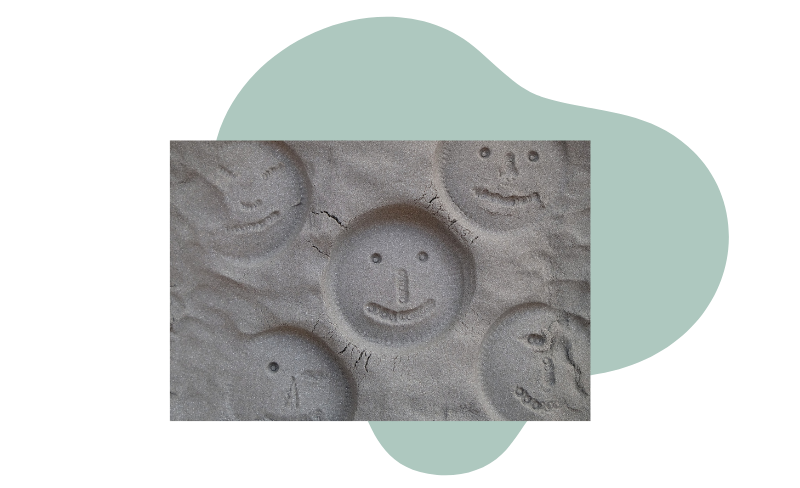Sand Clay Summer Fun
by Ms. Lisa
“The hand is the instrument of intelligence. The child needs to manipulate objects and to gain experience by touching and handling.”
— Maria Montessori
Summer is a wonderful time to get creative with your child. An easy and fun activity is to mix up some handmade play dough or clay together with your child. Not only are children (and parents for that matter!) drawn to the open-ended possibilities of this medium, but playing with the clay or dough has many valuable learning benefits to children of all ages.

Some of these benefits include:
- It strengthens small motor skills. Maria Montessori observed that activities that worked the finger and hand muscles were beneficial to later pencil control and writing skills. The manipulation needed to roll, squeeze, and shape the clay helps to strengthen these same muscles.
- Play-clay is also soothing. The touch and feel of clay has a naturally relaxing quality to it. Multi-senses are engaged as the child plays and explores.
- Clay is intriguing so children stay with this activity for longer periods of time, gradually increasing their attention span and concentration skills.
- Unlike other art activities, clay helps children understand the three dimensional aspect of their world.
- The tactile shaping and reshaping of the clay allow children to become flexible thinkers as they explore different shapes and forms, some that work, and some that might collapse easily.
- Clay is often a healthy outlet for emotions as the child squeezes, pounds, and pulls at the clay.
- Math skills are engaged not only with the mixing of the clay, but concepts of quality, length, shape, and form are practiced as the child forms and manipulates the dough.
- The child gains a sense of mastery and confidence. The open-endedness of the medium allows the child to explore and create in their own unique way.
- Clay is versatile. All ages can find a way to use this medium.
So mix up a batch of dough and let the family fun and learning begin. I recently discovered this sand-clay recipe that I’d like to share with you!

This sand-clay has a wonderful heavy, earthy feel to it. It will stay soft in an airtight container, but it can be air-dried till hard. Have your student help you mix the dough together!

Mix together the sand, flour, and salt in a large bowl. slowly add the warm water, mixing as you go with a large spoon. Add more flour or water as needed.
Knead the dough on a lightly floured surface. It should take less than a minute for the dough to come together into a soft and pliable ball, similar in feel and consistency to play dough.
Now that the sand-clay is mixed, here are some ideas of ways to use it, but of course, your child is the master and you should follow their lead!


Now that the sand-clay is mixed, here are some ideas of ways to use it — but of course, your child is the master and you should follow their lead!
toddlers
Sensory play. Stick animals in the clay and try to find them. Patting and punching balls of clay to flatten them.
preschoolers
Handprints, (you can dry them and keep them if you want!) Making cookies and snakes. Stick shells and sticks into the clay for decoration. Add tools such as cookie cutters, plastic knives, and garlic presses.
elementary
This is a wonderful clay for making fossils. Push toy dinosaurs or other animals into the clay, remove, and let air dry.
older elementary
Sand castle or other miniature dwellings. Beads for jewelry. Surround a toy dinosaur or other animal with the clay and let it air dry and then chip away at the hardened clay for archaeology play.


